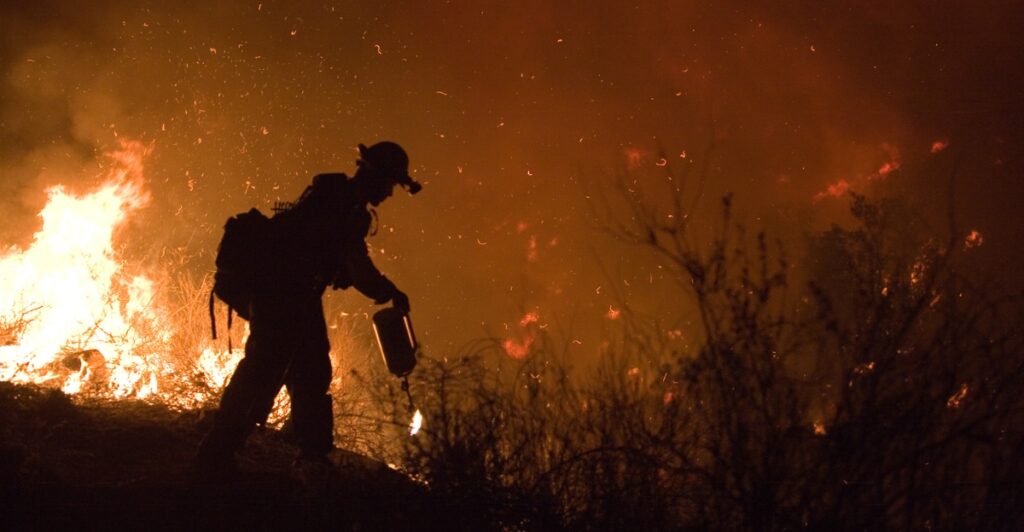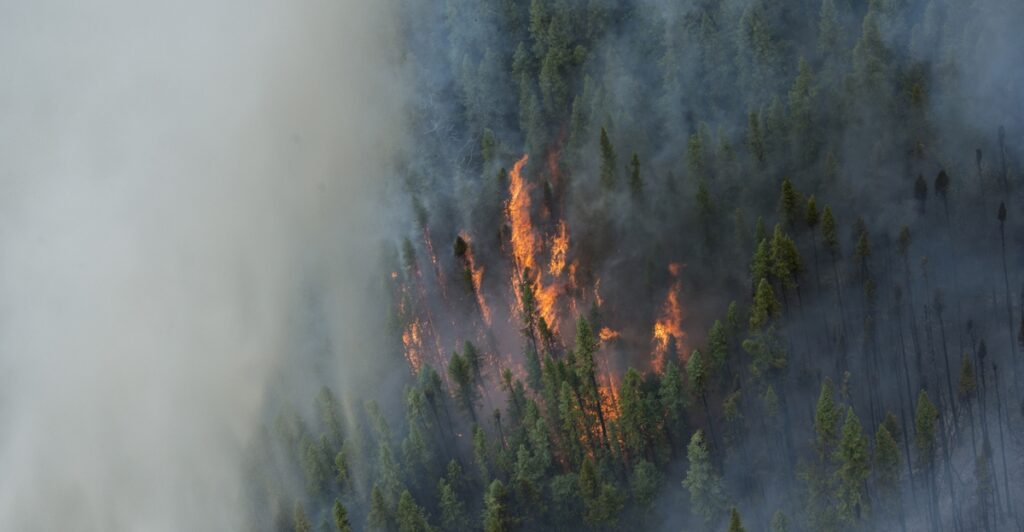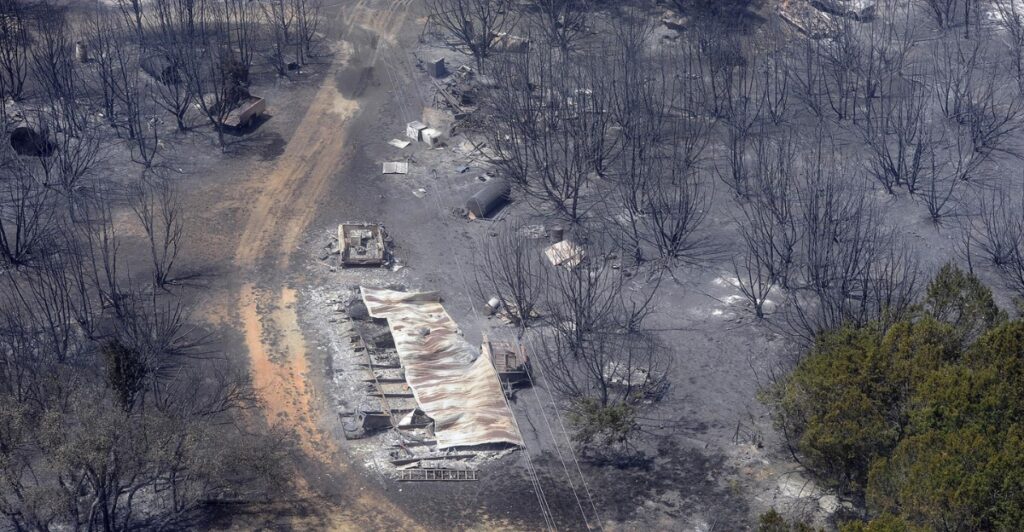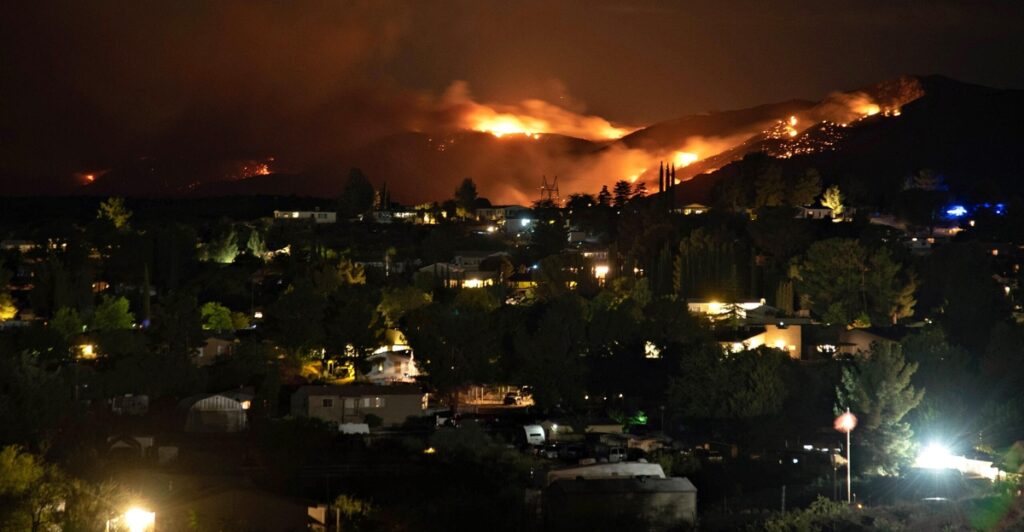
Wildfires are an escalating crisis in the United States, leaving behind devastation across communities, ecosystems, and economies. Data from the National Interagency Fire Center (NIFC) provides a stark picture of the states most affected by this growing threat. California often dominates the discussion, but other states also endure significant risks, each facing unique challenges shaped by geography, climate, and human activities. Here’s a look at the ten states most impacted by wildfires, drawn from the latest statistics and historical insights.
1. California

California’s wildfire is both extensive and catastrophic. With over 309,000 acres burned in 2022 in nearly 8,000 fires, the state remains at the forefront of this crisis. Intense drought, sprawling development in wildfire-prone zones, and climate change create a dangerous cocktail. Events like the Camp Fire of 2018, which claimed 85 lives and destroyed thousands of homes, illustrate the stakes. California’s vast geography and varying climate mean fires can erupt in its forests, grasslands, and even urban zones, leaving few areas untouched and only held back by cutting-edge firefighting technology and dedicated personnel.
2. Alaska

Alaska’s wildfires are colossal in scale, with over 3.1 million acres burned in 2022, making it the state with the largest area impacted. However, the sparse population often keeps these blazes away from major settlements. Fires here are typically fueled by lightning strikes and extended dry spells during the summer months. The state’s unique tundra and boreal forests are particularly vulnerable, leading to long-term ecological consequences. Alaska’s fire season is also gradually becoming longer due to rising temperatures, making wildfires an annual concern for residents and wildlife.
3. New Mexico

In New Mexico, wildfires burned 859,906 acres in 2022, most of the damage traced to human activity. That year’s Calf Canyon/Hermits Peak Fire—the largest in state history—left a significant mark. The arid climate, coupled with severe drought, creates an environment where wildfires ignite quickly and spread even faster. Forested areas and rural communities are often the hardest hit, disrupting livelihoods and forcing evacuations. Efforts to mitigate future risks include community education and forest management, but the state continues to grapple with the fallout of increasingly severe fire seasons.
4. Texas

Texas saw 671,800 acres go up in flames in 2022, primarily driven by human-caused ignitions and unrelenting dry weather. The state’s sprawling landscapes, from arid plains to dense woodlands, provide ample fuel for fires to spread rapidly. Urban-rural interface areas are particularly vulnerable, with thousands of properties at risk. Wildfire prevention is an ongoing challenge, and initiatives are focused on public awareness and better land-use practices. And yet, the unpredictable nature of weather patterns means Texas faces tough battles ahead in controlling fires before they escalate.
5. Oregon

Oregon faced over 2,100 wildfires in 2022, scorching over 436,082 acres. The state’s mountainous terrain and dense forests make it prone to fast-moving wildfires, especially during the dry summer months. Smoke from these fires often blankets large areas, impacting air quality for millions. Communities near forested regions are particularly susceptible, with evacuation orders becoming a grim routine. Despite investments in firefighting resources, the combination of lightning strikes, human-caused incidents, and shifting weather patterns keep Oregon on edge every fire season.
6. Idaho

The breathtaking landscapes of Idaho, dominated by forests and mountains, are increasingly at risk from wildfires. Over 436,733 acres burned in 2022, with human-caused fires accounting for more than half of the destruction. The state’s relatively sparse population doesn’t shield it from economic and environmental impacts. Tourism, a significant part of Idaho’s economy, suffers during fire seasons, while wildlife and watersheds endure lasting damage. Efforts to reduce risk include prescribed burns and forest thinning, but changing weather conditions make long-term solutions complex.
7. Oklahoma

Oklahoma experienced more than 2,800 wildfires in 2022, consuming 355,133 acres. The state’s vast grasslands, windy conditions, and dry spells make it particularly prone to fast-spreading wildfires. Unlike heavily forested states, Oklahoma’s fires often threaten agricultural areas and rural properties, putting livelihoods directly in harm’s way. Fire departments rely heavily on community support and proactive measures like controlled burns to prevent larger disasters. Despite these efforts, the increasing frequency of wildfires remains a daunting challenge.
8. Washington

In Washington, 173,659 acres were consumed by wildfires in 2022, with many fires encroaching on suburban developments near forested areas. The state’s lush, evergreen forests are a double-edged sword; while beautiful, they provide abundant fuel for wildfires during dryer periods. An uptick in fire activity has prompted widespread evacuations and concerns about air quality in recent years. Preventative measures such as forest health projects and public awareness campaigns aim to curb the impact, but the unpredictability of fire behavior adds urgency to the state’s response strategies.
9. Montana

Montana, with its rugged wilderness and iconic landscapes, saw 137,509 acres burned in 2022. Fires here often originate in remote areas but can quickly threaten communities when weather conditions align unfavorably. The state’s economy, which relies on outdoor recreation and agriculture, takes a hit each fire season. Managing wildfires in Montana involves collaboration between federal and state agencies, with efforts focused on forest health and reducing fire risks in populated areas. However, the sheer scale of the state’s wilderness presents ongoing challenges in controlling large blazes.
10. Arizona

124,165 acres burned in Arizona in 2022, highlighting the state’s susceptibility to wildfires despite its desert reputation. Dense vegetation, including invasive grasses, is a potent fuel source, particularly during the summer monsoon season when lightning strikes are common. Fires like the Yarnell Hill Fire of 2013, which claimed 19 firefighters’ lives, are an example of the danger first responders face. Urban areas adjacent to wildlands are frequently at risk, leading to significant property damage. Efforts to address the threat include public education on fire safety and the removal of invasive species, but Arizona remains in a precarious position.
Resources:
Stay connected with us for more stories like this! Follow us to get the latest updates or hit the Follow button at the top of this article, and let us know what you think by leaving your feedback below. We’d love to hear from you!







